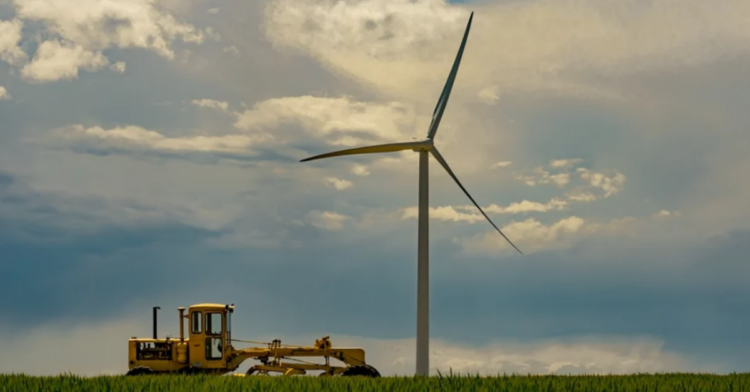Despite what certain politicians would lead us to believe, we’re likely to see some significant benefits both to our energy efficiency and to the environment if wind energy takes a more expansive role in the world’s energy production.
According to the U.S. Energy Information Administration , this is because they don’t produce emissions in the air or water except in rare malfunction cases and don’t require water to cool them. The more they can take on the burden of electricity production compared to systems that rely on fossil fuels, the fewer carbon dioxide emissions we’re likely to release into the atmosphere.
However, this doesn’t mean that they’re entirely without negative environmental impacts and one study outlines both their biggest problem and a potentially effective way to mitigate it.
Prior to 2013, collisions with working wind turbines killed an estimated 140,000-328,000 birds per year.

As a research team led by Dr. Christopher J.W. McClure wrote in the Journal of Applied Ecology , concerns over this issue had the effect of creating a “green vs. green” conflict and left birds in a particularly tight spot as it meant that both major renewable and non-renewable energy sources had a harmful effect on their populations.
Following a settlement agreement with the U.S. Department of Justice in 2013, Duke Energy set about developing strategies to reduce turbine-related bird deaths, which tended to rely on human observers identifying imminent bird collisions and stopping the turbines before they could happen.
But by August of 2018, they started including an automated system for doing this made by a company called IdentiFlight.
According to a release by the firm, sensors like the one you see here combine precise optical technologies with a neural network that allows them to identify incoming birds within seconds.
In that time, those using this technology can not only know how far away an incoming bird is but also whether it’s a member of an endangered species.
Shortly before the study by Dr. McClure’s team was released, another study found that IdentiFlight’s sensors consistently outperformed human obersvers in detecting incoming large birds.

But while that makes for a nice flex for IdentiFlight, McClure’s team set out to determine whether these technologies actually had a significant impact in reducing the deaths of these birds, with a particular emphasis on golden eagles.
This is because they’re a common species of large bird seen at both the site where human and IdentiFlight observation took place in Converse County, Wyoming and at the control site in the same county where no such mitigation measures were used.
At these sites, searchers scanned 110 places at the site under observation and 66 places at the control site for eagle carcasses.

These searches typically took place every 30 days but the control site saw these intervals widen to every 56 days between February 1, 2018 and December 31, 2019.
In instances where people who weren’t involved in the study found eagles and reported them to the United States Fish and Wildlife Service, the removed carcass was replaced by a dummy bird to reflect the number of fallen eagles.
Both sites were also cleared of other dead wildlife so that neither of them were more likely to attract birds than the other.
With this methodology, the research team was able to determine both how the IdentiFlight systems affected bird fatalities compared to human observations and compared to an absence of mitigation measures.

And what they found was that after these sensors were added to the turbines that humans once watched, bird fatalities decreased by 63%. By contrast, the timeline at the control sight saw deaths increase by 118%.
With this in mind, it’s perhaps not surprising that the IdentiFlight systems reduced deaths by 82% when compared to the control site.
Despite these results, the researchers still maintained that such systems were no substitute for building wind farms away from areas with heavy bird traffic.
After all, no matter how dramatically the technology was able to reduce the problem, it didn’t eliminate it entirely.

Still, the implications of this research are potentially lifesaving in instances where the risk of bird collisions becomes apparent only after the wind farm is already constructed.
And since it’s not easy to predict how much a given farm will impact local bird populations, that’s fairly likely to happen.
But now that the IdentiFlight systems have been shown to be effective, the next matter to research concerns how to decrease the amount of time it takes to shut down a turbine in the event of an incoming bird.
After all, the fact that the sensors can detect them within seconds only means so much if it takes the turbine between 20 seconds and a minute to slow down.
















































